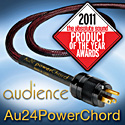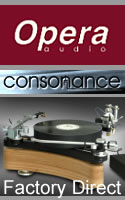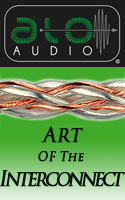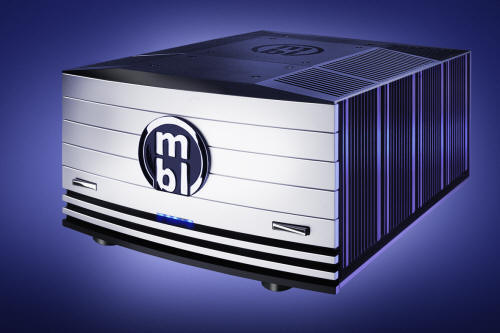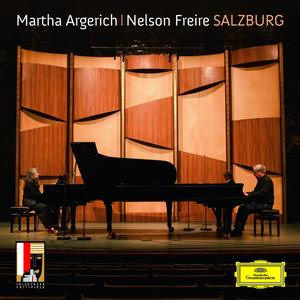|
|
You are reading the older HTML site
Positive Feedback ISSUE 59
mbl 9008A Reference Amplifiers - The Dynamic Authority as reviewed by Marshall Nack
Last night I swapped out the Tenor 175S stereo amp for the mbl 9008A Reference monos. Expectations were two-fold: 1) the specs told a story of vastly more power than the Tenor; 2) I couldn't imagine the solid-state 9008A approaching the hybrid Tenor's tone, not to mention its timbre, which is simply gorgeous. The latter is where I expected a big falloff. The 9008As were virgin: we broke the seal on the flight case. I figured I wouldn't pay them much mind for a couple of days. But lo, the major burn-in happened overnight and by the next morning I couldn't help tuning in because the seduction had begun. MBL's Pedigree Ah, the house sound of MBL's Reference Line! (Now under new distribution in North America by MBL North America, Inc., a subsidiary of MBL Germany.) It is quite familiar to me—the mbl 6010D preamp resides in my reference system. I also had in the mbl 9007 monoblocks, one rung down from the 9008A, for a lengthy audition. Plus, the brand is always well represented at trade shows. On the test bench these products make technicians salivate by generating admirable specs and response curves. The 9008A not only conforms to the family profile—it helped establish MBL's reputation at the highest levels of the High-End. In my listening room, the 9008A is smooth and grainless—it doesn't even exhibit a solid-state grain structure. It sounds warmish-neutral and wonderfully full-bodied, with trendsetting, controlled bass that's quite a bit different from most, and sweet, articulated treble. And so quiet—there is virtually no noise floor. Behind it all, you can't fail to note an unmistakable sense of overwhelming power just waiting to express itself. The 9008A is comparatively dark. Going from the Tenor to the MBL, I had to re-voice the system to lighten things up, to help the treble emerge. With that said, frequency response is as smooth and even as it gets.
The 9008A sounds wonderful—no surprise there. It is one of the top three amps I've auditioned, right up there alongside the Tenor 175S and the Soulution 710. OK, now that I've established its pedigree, what I'd like to do is compare the 9008A to its classmates. I figure this will give you maximum insight on how things differ at the top of this price range. (The 9008A MSRP is $60,600; the Tenor is $55,000; the Soulution is $50,000.) The Dynamic Authority Let's start with item one. Where the Tenor had noticeably more dynamic headroom than the Soulution, I expected the MBL to be another dramatic leap up. My hunch was on the mark, but it turned out to be overstated. Go ahead—put on the big stuff. Let me suggest Shostakovich: Symphony No. 8, a new recording with Vasily Petrenko and the Royal Liverpool Philharmonic Orchestra (Naxos 8.572392). If you like Shostakovich, you must check out what Petrenko is doing. The unlikely combination of a young Russian at the helm of a second-tier British orchestra has produced what many are considering a “must have” Shostakovich symphony cycle.
Go ahead—crank it up loud. Symphony No. 8 has extended tutti passages. Rather than the occasional whack on the bass drum, it features sustained tympani and bass drum rolls that go on for nearly half a minute at peak SPLs. Try that with your current amp. I'll bet it whimps out, exhausted in short order under this kind of demand. With the 9008A you won't hear dynamic compression or a change in quality. It's the difference between a V8 and a V6 automobile engine. One car may go as fast as the other, but the passengers' experience of the ride is not the same. There is no rattling this amp—it is confident and authoritative. If your thing is massive symphonic forces, the 9008A is what you've been waiting for. There is no question the 9008A moves ahead of the Tenor. The loudest crescendo fills my room with a quality of dynamic room engagement I have not experienced before. Even though it wasn't the doubling I was anticipating we were cresting at unheard of heights.
Actually, it's almost too much for the room. The notion that my room is the limiting factor cropped up occasionally with the Tenor. With the 9008A, I'm more aware of it—visitors routinely mention it now. I'm maxing out, hitting a plateau given the 12' x 33' x 8' dimensions. The 9008A is not only über powerful, but the quality of these dynamic events is immaculate. Let me explain. I've been listening to a lot of chamber music lately in my quest to discover the desert island recordings of Dvorak's chamber works. One of the things I'm learning about in the process is how variably dynamic markings can be interpreted at the loud end. On many recordings, especially those with younger musicians, they pull out all the stops and go for broke when they see a crescendo marking. The results can be exhilarating, true, but also markedly different in quality from when they play medium or softly. Why can't they just play louder without going nuts? Case in point: the Grammy-winning Pavel Haas Quartet. Based on the PR, I purchased a couple of their CDs. Alas, I found them just as guilty of this offense. Furthermore, their interpretation was charmless—a thorough disappointment. Makes me wonder if there's a back-story behind the award. The CD was summarily recycled down the food chain. My current favorite groups, the Leipzig and Prazak quartets, play with a consistency of tone, regardless of the dynamic marking. That means there is no break in quality over the length of the piece. The 9008A does this, too. When a crescendo is called for, it plays louder; it doesn't change and start to sound like a different amplifier. And within the crescendo, some instruments get louder, while other ones remain at the same dynamic, all per the dictates of the score. It's not like you've turned up the volume and had an across-the-board increase. Loud or soft, there is no hint of stress at any SPL. The 9008A is the ultimate in composed. Damping Factor The 9008A played games with time. I'm listening to Martha Argerich and Nelson Freire on the CD SALZBURG (DG 477 8570), a live concert recording of their 2009 Salzburg Festival duo piano recital.
Martha lays out the principal theme on Variations on a Theme of Joseph Haydn by Brahms. The second piano starts up a counterpoint. Both of these events are so discretely elucidated and each instrument's image so isolated on the soundstage as to give the distinct impression of notes coming and going entirely independent of one another. The expanded space between the image artifacts instills a sense of expanded temporal space. Somehow, time is stretched. They're playing at the appropriate tempo. Decay is fully expressed—the amp is not clipping the tail of the note. What enables this phenomenon?
A big factor may be the 9008A's heavy and consistent application of damping. Any good amp will sufficiently damp the mids on up—I'm used to this in the treble and midrange. What the 9008A does is extend that to the low register, so it is consistent from top to bottom. The 9008A has just as much control over the low end as it has over the midband. In fact, it is 100% in control. There is no smearing and no frequency overhang. This clarity in the low end, in turn, impacts visibility throughout the frequency spectrum. And the damping does wonders for soundstaging.
You won't hear runaway events, as when a particular frequency at a certain SPL triggers a jarring, piercing treble projectile from out of nowhere, or a low frequency wave that excites the room and booms uncontrollably. At least, there are fewer of these events than with other amps. Slow Responders? Another reason the 9008A soundstage will never bite you is because the transient has a rounded edge. Don't let this lead you to think the amp is slow—nothing could be further from the truth. The 9008A moves like a sports car. If you consider most audiophiles having the equivalent of a Honda Civic, the Tenor may be likened to a Rolls Royce Phantom, with its quick and luxurious ride; the Soulution to a Porsche Turbo that lets you feel every move; and the 9008A, on the other hand, is like an AMG Mercedes S-Class German Touring car, luxurious, powerful and smooth.
Tone and Timbre Let's move on to item two. Again, just as it was for macro dynamics, my hunch was on target, but I overestimated the impact. Saturated tone is one of the things the MBL brand is known for and the 9008A has it in spades. Its tonal density is the envy of many solid-state amplifier manufacturers. I touched on this previously in my discussion of the amps' dynamics. You'll be hard pressed to find better than the 9008A. From the first push of the ON button, it didn't even occur to me to get up and fiddle around with the sound. Fiddle with what? The 9008A satisfies. I stayed put in the listening seat and the 9008A remained as it began, placed alongside each speaker, directly on the carpet, surrounded by Kubala-Sosna cabling, without a third-party footer, an amp stand or power conditioning. The mbl 9008A is truly plug-n-play. OK, now let's get to the comparison. Limiting our scope to solid-state, in terms of timbre only the Soulution 710 betters it. The 9008A renders timbre a bit flatter. Similar to its even-handed, consistent treatment of frequency bandwidth, volume levels and damping, so too some elements of timbre were consistent regardless of which instrument is playing. (As you see, consistency comes up again and again with this amp.) While there's no trouble discerning which instrument is playing, the Soulution 710 has more complexity. Expanding the comparison to include the Tenor, there is no question the 9008A doesn't have the aural deliciousness and sheer density of this hybrid's tone. Tubes in general do tone and timbre better than solid-state and the Tenor is among the best in this department. The Tenor is extremely good at breaking out the various instruments of the orchestra. It easily differentiates among similar sounding ones, like clarinet and oboe. (Speaking of which, you should hear the Ypsilon VPS 100 phono stage in this regard. It's truly magical.) To introduce these aspects of filament timbre, I swapped in a tubed preamp, the Veloce LS-1. The result was sensational, one of the best sounds I've ever had. Let me repeat: the 9008A performs at a very high level here and we're talking about the best of the best. I took note of the differences from the other amps because that's my job, and then sat back for more listening pleasure.
Appearance and Cosmetics It's funny. When I installed the Soulution 710 stereo amp, people compared its girth to an industrial air conditioning unit. Now I'm looking at two chassis, each bigger than the Soulution. They look like they mean business. The 9008A is a scaled down version of MBL's flagship 9011 amplifier. The look is masculine and massive—and expensive. The amp is available in piano arctic silver, piano black or piano white. Any color amp has a choice of 18K gold-plated or chrome-plated accents (logo, switches). Everything is overbuilt. No chintzy binding posts here! But isn't that what you want at this price point? The binding posts are an mbl design and built in-house like everything else in the MBL factory outside Berlin. At the end of an evening's use the amp is barely warm. The 16 Sanken Bipolar output devices per chassis are mounted to massive copper bars and then to the heat sinking on the chassis. Each device runs at a minimum load.
Each anodized aluminum chassis has a bar of LED indicator lights on the front panel and a Standby switch. The main On/Off switches are around back. In Standby, the input electronics are active but the outputs are muted. The amps need the usual 45 to 60 minutes to warm-up. The recommendation is to leave the amps on but in Standby mode when not in use. Stereo or Mono? One 9008A can be used as a stereo amp with single-ended interconnects. However, the manufacturer strongly recommends you use it as a monoblock, with balanced interconnect cables and a balanced input source. The amp's design is differential balanced: there are two amps inside each monoblock, one for the ON phase; the other for the OFF phase. When used in balanced mono mode, it is a true differential amp. Stereo connection is only available in single-ended mode, where one amp sees the left channel's input… same for the right channel. This is only conceived as an upgrade path so a customer can use a single amp in stereo until he later adds a second to achieve full differential monoblocks. You will need two power cords for each amp. That's right—four power cords are needed if you want to get optimum sound. Each 9008A has two power transformers—the Main and the Boost power—with an associated, lighted On / Off rocker switch and 15 amp IEC receptacle on the rear panel. Each PC powers one transformer.
Two PCs with two transformers, two capacitor groups, and two output groups The two transformers charge two capacitor groups, which in turn feed two output groups. If you use a single power cord only one transformer will charge both capacitor groups. You won't get nearly the headroom the amp is capable of and you might experience soft clipping on peaks or with difficult speaker loads.
Bi-wiring The manufacturer also recommends bi-wiring your speakers. Bi-wiring with a mono-block is desirable and audible. It improves the amp's damping capability by better controlling the speakers' back EMF (return Electro Motive Force fed back from the speaker into the amp). Two sets of binding posts are provided for mono bi-wiring, as well as a set when using a single amp in stereo.
Conclusion I've been on a roll with a succession of world-class amplifiers. The mbl 9008A Reference joins that group as one of the three best amps I've auditioned. It's been quite a ride. These solid-state mono-blocks are on the accurate side of the fence, but it's an accuracy tempered by many tube-like qualities. The 9008A is in total control. There are no runaway events—consistent damping across the frequency spectrum takes care of that. This does wonders for soundstaging: it is unwavering, ultra precise and clear as a bell. For macro dynamics—the headroom required to pull off symphonic reproduction—the 9008A can't be bettered at this price point. Whatever the signal demand, the mbl 9008A scales magnificently. Its dynamic range was so expansive, the limiting factor became my room. The takeaway is no surprise. The 9008A's voicing was just my cup of tea: everything was happening on an exceedingly high plane and my YG Anat Studio speakers just loved them. Warm and clear—these contradictory adjectives describe the 9008A. With this amp, you can have your cake and eat it, too. Marshall Nack
mbl 9008A mono amp
MBL Akustikgeräte GmbH US Distributor
MBL North America, Inc
|
